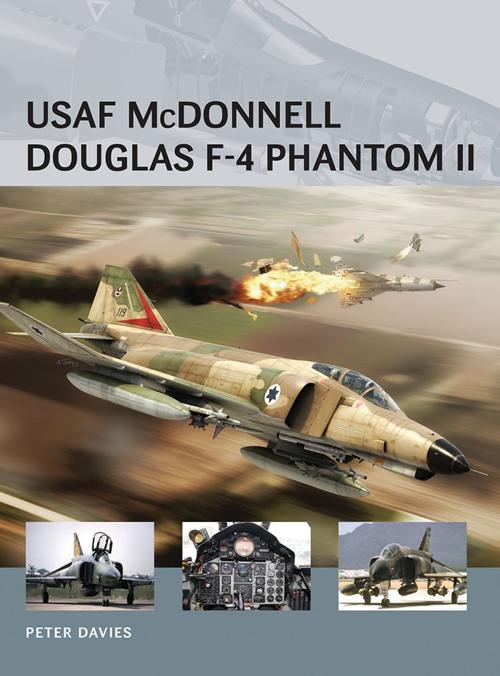USAF McDonnell Douglas F-4 Phantom II
Nonfiction, History, Military, Vietnam War, Aviation, United States| Author: | Peter E. Davies | ISBN: | 9781780966106 |
| Publisher: | Bloomsbury Publishing | Publication: | April 20, 2013 |
| Imprint: | Osprey Publishing | Language: | English |
| Author: | Peter E. Davies |
| ISBN: | 9781780966106 |
| Publisher: | Bloomsbury Publishing |
| Publication: | April 20, 2013 |
| Imprint: | Osprey Publishing |
| Language: | English |
In many respects the most successful, versatile and widely-used combat aircraft of the post-war era the F-4 Phantom II was quickly adopted by the USAF after its spectacular US Navy introduction. Its introduction to USAF squadrons happened just in time for the Vietnam conflict where USAF F-4Cs took over MiG-fighting duties from the F-100 Super Sabre. Although the F-4 was never intended as a dog-fighter to tangle with light, nimble, gun-armed MiGs it was responsible for destroying 109 MiGs in aerial combat. At the end of their careers many of the survivors from the 3,380 'land-based' Phantoms were converted into target drones for training purposes. New aircraft were also built for West Germany, Iran and Israel. The USAF's experience with the Phantom showed clearly that the air-to-air fighter was still a necessity and its decision to fund its successor, the McDonnell-Douglas F-15 Eagle (as well as the F-16 Fighting Falcon and F-22A Raptor) was heavily influenced by the lessons of US and other Phantom pilots in combat.
In many respects the most successful, versatile and widely-used combat aircraft of the post-war era the F-4 Phantom II was quickly adopted by the USAF after its spectacular US Navy introduction. Its introduction to USAF squadrons happened just in time for the Vietnam conflict where USAF F-4Cs took over MiG-fighting duties from the F-100 Super Sabre. Although the F-4 was never intended as a dog-fighter to tangle with light, nimble, gun-armed MiGs it was responsible for destroying 109 MiGs in aerial combat. At the end of their careers many of the survivors from the 3,380 'land-based' Phantoms were converted into target drones for training purposes. New aircraft were also built for West Germany, Iran and Israel. The USAF's experience with the Phantom showed clearly that the air-to-air fighter was still a necessity and its decision to fund its successor, the McDonnell-Douglas F-15 Eagle (as well as the F-16 Fighting Falcon and F-22A Raptor) was heavily influenced by the lessons of US and other Phantom pilots in combat.















